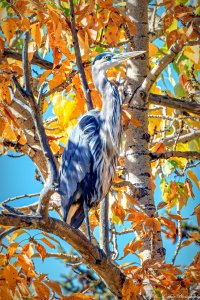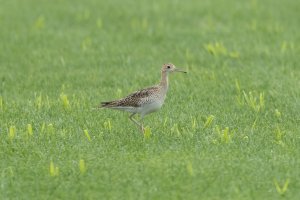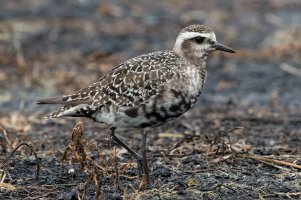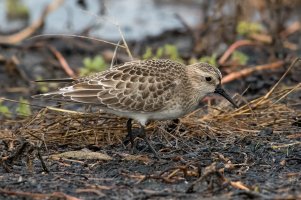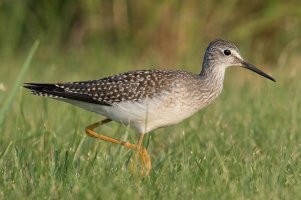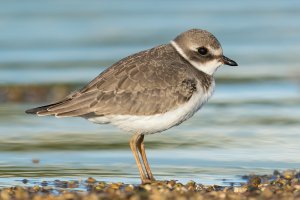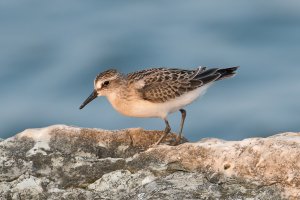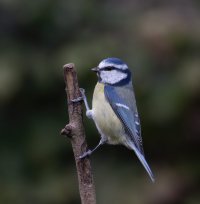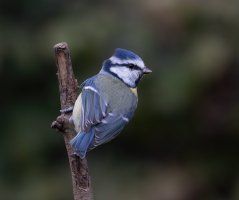You are using an out of date browser. It may not display this or other websites correctly.
You should upgrade or use an alternative browser.
You should upgrade or use an alternative browser.
Show your Bird Portraits
- Thread starter 1982chris911
- Start date
That's a beautiful shot, bhf3737. Out of curiosity, how do you find the sharpness and contrast of an image (at the pixel level) with the 1.4x TC and 100-500 vs the 800mm f11 (assuming you have one?). I'll have both the 100-500(when it ever comes in) and 800 and wonder if I should ignore getting the 1.4x TC or not?My first shot with EOS R and RF 100-500mm + RF 1.4 extender.
700mm, f/10, 1/200sec, ISO160.
Great Blue Heron.
View attachment 193108
Upvote
0
Thanks. I wish I had both lenses to check side by side. The RF 800 was rental and although the picture quality (contrast and sharpness) was good, I cannot say which one is better at pixel level. For me, RF 800 was limiting from minimum focus distance perspective. Trying to find a small bird on a close by tree and then finding out that you cannot AF was frustrating. RF 100-500 does not have that disadvantage and even with the EX 1.4 extender, it can focus on very close and very far away subjects. But RF 100-500 + EX 1.4 has its disadvantage either. It only allows using EX from 300mm and leaves lens barrel extended and there is nothing to lock it in place. I don't want to risk leaving the lens in the bag with barrel extended. I am thinking of returning the extender and get RF 800mm instead which costs almost the same.That's a beautiful shot, bhf3737. Out of curiosity, how do you find the sharpness and contrast of an image (at the pixel level) with the 1.4x TC and 100-500 vs the 800mm f11 (assuming you have one?). I'll have both the 100-500(when it ever comes in) and 800 and wonder if I should ignore getting the 1.4x TC or not?
Upvote
0
Having to travel with both the rather long 800mm and the 100-500mm seems rather burdensome. From what I can see from staring at Canon’s data, the TDP site and the odd posting on the net, the 800 seems to be about the same as the 100-400mm II + 2xTC for IQ, I used to go on safari and bird watching holidays with the 400mm DO II + 2xTC on the 5DIV but gave that up in favour of the zoom. I’ll stick with the 100-400mm II + 2xTC If I need 800mm.Thanks. I wish I had both lenses to check side by side. The RF 800 was rental and although the picture quality (contrast and sharpness) was good, I cannot say which one is better at pixel level. For me, RF 800 was limiting from minimum focus distance perspective. Trying to find a small bird on a close by tree and then finding out that you cannot AF was frustrating. RF 100-500 does not have that disadvantage and even with the EX 1.4 extender, it can focus on very close and very far away subjects. But RF 100-500 + EX 1.4 has its disadvantage either. It only allows using EX from 300mm and leaves lens barrel extended and there is nothing to lock it in place. I don't want to risk leaving the lens in the bag with barrel extended. I am thinking of returning the extender and get RF 800mm instead which costs almost the same.
Upvote
0
Sure, but now you have AF at 800. I marvel at how Canon has come roaring back with the R5. It's been "fun" seeing all the attacks on the camera while I've been just dying to get my hands on it. Saving my pennies and about half way there.Having to travel with both the rather long 800mm and the 100-500mm seems rather burdensome. From what I can see from staring at Canon’s data, the TDP site and the odd posting on the net, the 800 seems to be about the same as the 100-400mm II + 2xTC for IQ, I used to go on safari and bird watching holidays with the 400mm DO II + 2xTC on the 5DIV but gave that up in favour of the zoom. I’ll stick with the 100-400mm II + 2xTC If I need 800mm.
I must say about the 400, especially at 800, it is rather heavy but my biggest frustration is not being able to zoom out quickly in various scenarios such as a moose showing up when I'm shooting birds. What is your opinion now that you're gaining experience with the R5 about having the 100-500? It seems to me the restriction on FL range with extenders would be a major frustration but in your case you're having to deal with an adapter. OTOH having 1000 might be quite nice on occasion.
Jack
Upvote
0
We are spoilt for choice. The 100-500mm is a cracking lens. But, so is the old 100-400mm II. As I have a copy that is tack sharp from edge-to-edge and the pair of TCs to go with it, I have suppressed my GAS and am very happy with the handling and results with my existing lenses. I can even shoot hand held with the 2xTC on the 100-400mm at 1/100-200s with pixel level sharpness. There's not going to be much difference in resolution between a 1000mm at f/14 and 800mm at f/11 with the high resolution R5 sensor because you are getting into serious diffraction limitation where the resolution-limiting factor is the diameter of the front lens, and both lenses have the same diameter.Sure, but now you have AF at 800. I marvel at how Canon has come roaring back with the R5. It's been "fun" seeing all the attacks on the camera while I've been just dying to get my hands on it. Saving my pennies and about half way there.
I must say about the 400, especially at 800, it is rather heavy but my biggest frustration is not being able to zoom out quickly in various scenarios such as a moose showing up when I'm shooting birds. What is your opinion now that you're gaining experience with the R5 about having the 100-500? It seems to me the restriction on FL range with extenders would be a major frustration but in your case you're having to deal with an adapter. OTOH having 1000 might be quite nice on occasion.
Jack
The adapter is no bother. Personally, I prefer to have the adapter and an EF TC that allows the lens to have a focal length over the whole range and retract fully, than an RF TC that restricts the shortest focal length to 420mm at 1.4x and 600mm at 2x and makes the partly retracted lens on the long side.
Upvote
0
I have taken photos with the R5 and RF 800mm f11 lens, and it can AF just fine with it.Thanks. I wish I had both lenses to check side by side. The RF 800 was rental and although the picture quality (contrast and sharpness) was good, I cannot say which one is better at pixel level. For me, RF 800 was limiting from minimum focus distance perspective. Trying to find a small bird on a close by tree and then finding out that you cannot AF was frustrating. RF 100-500 does not have that disadvantage and even with the EX 1.4 extender, it can focus on very close and very far away subjects. But RF 100-500 + EX 1.4 has its disadvantage either. It only allows using EX from 300mm and leaves lens barrel extended and there is nothing to lock it in place. I don't want to risk leaving the lens in the bag with barrel extended. I am thinking of returning the extender and get RF 800mm instead which costs almost the same.
When I look at the front DO element, I'm amazed that at first glance it looks like a normal smooth lens. Only when I look closely at it with a strong light reflected off its surface can I notice the very slight edges of the tiny DO "rings" in it. It's amazing that the DO technology of the huge original lighthouse lenses can be shrunk and mass produced to give such good IQ. I know that it can't possibly have the same high quality contrast as a normal high quality lens due to those edges, but the overall IQ is amazing considering what the old lighthouse lenses looked like!
Upvote
0
I am not nitpicking but just want to summarise my attempts to understand the lens technologies. The Fresnel lenses used in lighthouses are a different technology from the DO of Canon and the Phase Fresnel of Nikon. The lighthouse lenses are pure refractive lenses - Fresnel compacted a very thick lens into a thin one made of concentric rings with the same curvature as the thick one, and focuses light by bending it like the thick lens. The DO and Phase Fresnel are pure diffraction. The diffraction lens had its forerunner in the Fresnel Zone Plate, which has concentric rings of light transmitting and absorbing materials that diffract and focus light with about 10% efficiency. Then someone had the bright idea of replacing the absorbing material with rings of transmitting material that retarded the phase by pi, and diffracted the light to the same point and doubled the light. Then in 1961, Miyamamoto invented the Phase Fresnel lens which looks like a micro version of the original lighthouse lens but diffracts with phases differing by modulo 2pi. It acts like an analog zone plate but with near 100% efficiency.I have taken photos with the R5 and RF 800mm f11 lens, and it can AF just fine with it.
When I look at the front DO element, I'm amazed that at first glance it looks like a normal smooth lens. Only when I look closely at it with a strong light reflected off its surface can I notice the very slight edges of the tiny DO "rings" in it. It's amazing that the DO technology of the huge original lighthouse lenses can be shrunk and mass produced to give such good IQ. I know that it can't possibly have the same high quality contrast as a normal high quality lens due to those edges, but the overall IQ is amazing considering what the old lighthouse lenses looked like!
Upvote
0
Thanks, AlanF, for the additional explaination of the DO technology. I wasn't aware of how Canon did its magic, and this seems to make sense. I don't know the efficiency of the lens, but I would hazard a guess that it will have a small but measurable (and probably visible) effect of undesired scattering of light due (at the very least) by what happens at exactly the edges of the noticeable rings. If I can see an effect (seeing the edges clearly) when looking at the lens closely, then I'm sure there will be a scattering effect on the light going through it and thus a reduction in the contrast in the focused image. It's probably somewhat proportional to the very small amount that is visibly noticeable in the reflection I see, which is why its image is so good in the images posted. But I have seen close up views of careful test images from DO lenses vs their best "big whites", and you can clearly see there is a noticeable drop in contrast, while only the slightest drop in resolution. But if the IQ is "good enough", which I think it is, then the drastically smaller and lighter lens and lesser cost make the new DO technology a very welcome addition to the Canon lineup, and I'm glad to have one of the first RF DO lenses and look forward to what future magic Canon can come up with.I am not nitpicking but just want to summarise my attempts to understand the lens technologies. The Fresnel lenses used in lighthouses are a different technology from the DO of Canon and the Phase Fresnel of Nikon. The lighthouse lenses are pure refractive lenses - Fresnel compacted a very thick lens into a thin one made of concentric rings with the same curvature as the thick one, and focuses light by bending it like the thick lens. The DO and Phase Fresnel are pure diffraction. The diffraction lens had its forerunner in the Fresnel Zone Plate, which has concentric rings of light transmitting and absorbing materials that diffract and focus light with about 10% efficiency. Then someone had the bright idea of replacing the absorbing material with rings of transmitting material that retarded the phase by pi, and diffracted the light to the same point and doubled the light. Then in 1961, Miyamamoto invented the Phase Fresnel lens which looks like a micro version of the original lighthouse lens but diffracts with phases differing by modulo 2pi. It acts like an analog zone plate but with near 100% efficiency.
Upvote
0
I think that there is a problem of some "zero order" diffraction where the light goes straight through. Because of this, the DO/PF lens are their weakest when the subject is back lit or has a very bright background and the contrast goes to pot. They are at their best with the sun behind our backs, which is where we want it. I had those problems with my 400mm DO II and now with the 500mm PF, but the other factors of weight and size more than compensated, and with the light not in the wrong position, they are as good as their heavy brothers.Thanks, AlanF, for the additional explaination of the DO technology. I wasn't aware of how Canon did its magic, and this seems to make sense. I don't know the efficiency of the lens, but I would hazard a guess that it will have a small but measurable (and probably visible) effect of undesired scattering of light due (at the very least) by what happens at exactly the edges of the noticeable rings. If I can see an effect (seeing the edges clearly) when looking at the lens closely, then I'm sure there will be a scattering effect on the light going through it and thus a reduction in the contrast in the focused image. It's probably somewhat proportional to the very small amount that is visibly noticeable in the reflection I see, which is why its image is so good in the images posted. But I have seen close up views of careful test images from DO lenses vs their best "big whites", and you can clearly see there is a noticeable drop in contrast, while only the slightest drop in resolution. But if the IQ is "good enough", which I think it is, then the drastically smaller and lighter lens and lesser cost make the new DO technology a very welcome addition to the Canon lineup, and I'm glad to have one of the first RF DO lenses and look forward to what future magic Canon can come up with.
Upvote
0
I've been out of it lately, too many pictures and no editing!!! Shorebird migration in my area was decent this year, with several rare birds coming through and hanging out for awhile. All taken with 7D mkll / EF 600 F4 ll / 1.4x lll.
Jeremy
Buff-breasted Sandpiper
Upland Sandpiper
View attachment 193117View attachment 193118View attachment 193119View attachment 193120View attachment 193121View attachment 193122
Really great shots!!! All together with your next post (I started answering before I looked at the second post). Are you in hide?! Or the birds are in populous area and kind of tame?
Upvote
0
Most shorebirds are very tame and I'm sure you know, that if you just sit still on the ground, they will walk right up to you. So the Buff-breasted, although rare to my area, was so close I had to take off my extender for a short time. Most likely a first year bird, with no prior human contact, but hung out at one of our busiest lake shore parks and was very tame. The majority of the others were at a sod farm, where they were between 75'-300'. So it really helps to have the 840mm! It's really tough shooting, because you're constantly fighting heat waves. I was surprised the Upland Sandpiper photos turned out at all, it was hot and humid and distortion was vey high. You can see it in the photos, but a few turned out ok. He was quite far away from the road, at least 75yds at all times Those things just destroy photos! I think we were rather lucky this year at the sod farm, because they turned over a few spots closer to the road. It's a country highway, with light traffic, so I just pull my truck over and shoot from drivers seat.
Upvote
0
Similar threads
- Replies
- 118
- Views
- 97K



